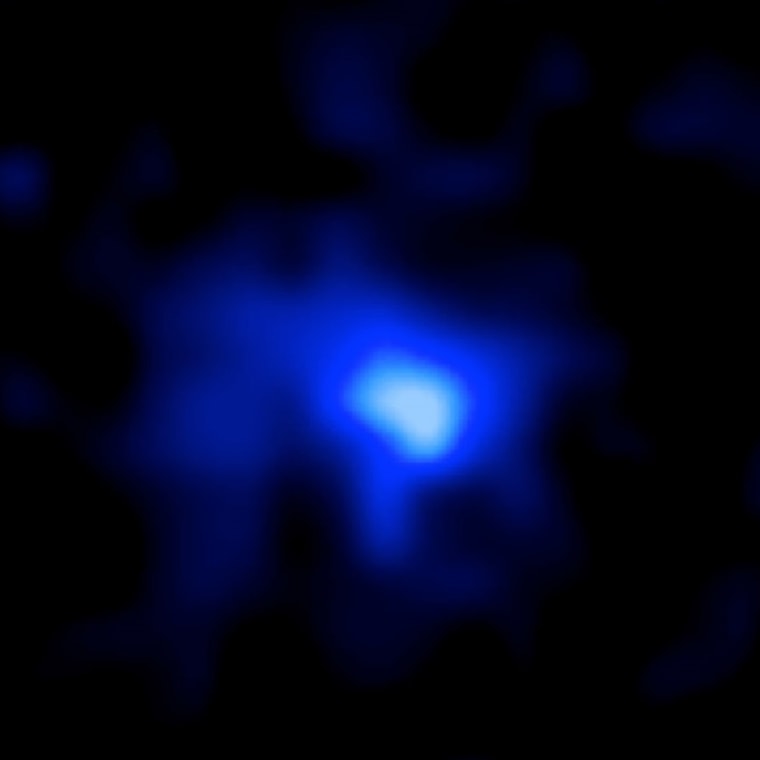Astronomers have identified a galaxy so far away from us that its light was emitted more than 13 billion years ago — when the universe itself was just a baby. That means the galaxy was more than 13 billion light-years away, which makes it the most distant galaxy ever measured using a precise spectroscopic method.
The research team had to combine information from the Hubble and Spitzer Space Telescopes, plus the Keck I Telescope in Hawaii, to get an accurate reading on the distance to the galaxy known as EGS-zs8-1.

Thirteen billion years ago, the galaxy was a mere 100 million years old. At the time, it was one of the brightest and most massive objects around. This made it possible for the telescopes to see EGS-zs8-1 while other, dimmer galaxies evaded detection.
This ancient galaxy offers a sort of window in the equally distant past. "Every confirmation adds another piece to the puzzle of how the first generations of galaxies formed in the early universe," Yale's Pieter van Dokkum, one of the authors of a paper describing EGS-zs8-1, said in a news release from the Hubble team.
The near-infrared spectroscopic measurements from Keck's MOSFIRE instrument set EGS-zs8-1's redshift level at 7.73, which means the light we see today was emitted by the galaxy 13.044 billion years ago. In comparison, the universe is estimated to be 13.8 billion years old. Some galaxies are thought to be older than EGS-zs8-1, but the methods used to measure their age and distance aren't as reliable as the spectroscopic method.
Closer examination of faraway objects will be made possible with the launch of the James Webb Space Telescope in 2018, which is better equipped for the task.
The astronomers' paper appears in the May 5 issue of The Astrophysical Journal Letters.
IN-DEPTH
- Hubble Telescope Celebrates 25 Years of Space Photography
- Hubble Space Telescope Turns 25, With Discoveries and Drama Galore
- The Biggest Thing? Supervoid Spans a Billion Light-Years
